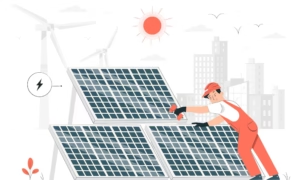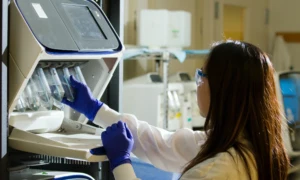Introduction
Greenhouses are invaluable tools for farmers and gardeners, providing controlled environments for nurturing plants regardless of external conditions. However, to maximize their effectiveness, it’s crucial to fortify them against various elements that can threaten crop health. One essential aspect of greenhouse fortification is the use of high-quality greenhouse film. In this article, we’ll explore the importance of greenhouse film and considerations for selecting the right one for your needs.
Understanding Greenhouse Film
Greenhouse film serves as the protective barrier that shields plants from external factors such as wind, rain, and fluctuations in temperature. It acts as a buffer, creating a stable microclimate within the greenhouse conducive to plant growth. When selecting greenhouse film, several factors come into play, including thickness, durability, light transmission, and thermal properties.
Choosing the Right Greenhouse Film
The first consideration when choosing greenhouse film is its thickness. Thicker films offer better durability and insulation, providing enhanced protection for your crops. However, they may also reduce light transmission, impacting plant growth. Balancing thickness with light transmission is essential to ensure optimal growing conditions.
Ensuring Durability
Durability is another critical factor to consider. Green house film is subjected to constant exposure to sunlight, temperature variations, and physical stress from wind and debris. Opting for a high-quality, UV-resistant film can significantly extend its lifespan, reducing the need for frequent replacements and maintenance.
Maximizing Light Transmission
Light is essential for photosynthesis, the process by which plants convert light energy into chemical energy, fueling their growth. Therefore, maximizing light transmission through the greenhouse film is paramount. Look for films specifically designed to optimize light diffusion and minimize shadows, ensuring uniform light distribution across your crops.
Managing Heat and Humidity
Maintaining optimal temperature and humidity levels is crucial for plant health and productivity. Greenhouse film plays a significant role in regulating these factors by trapping heat from sunlight during the day and preventing heat loss at night. Additionally, choosing a film with adequate ventilation properties can help prevent humidity buildup, reducing the risk of fungal diseases and promoting air circulation.
Considering Price and Value
While quality should be a primary consideration, it’s also essential to factor in the price of greenhouse film. Prices can vary depending on factors such as material quality, thickness, and brand reputation. However, investing in high-quality film upfront can yield long-term savings by reducing maintenance costs and improving crop yields.
Calculating the Cost
When evaluating the Greenhouse film price, consider not only the initial purchase cost but also the potential savings and benefits it offers over its lifespan. A slightly higher upfront investment in a durable, high-performing film can pay off in terms of reduced replacement frequency, improved crop quality, and higher yields.
Comparing Options
Before making a purchase, it’s advisable to compare different greenhouse film options based on their specifications, performance characteristics, and customer reviews. Look for reputable suppliers who offer transparent information about their products, including test results and customer feedback.
Seeking Professional Advice
If you’re unsure about which greenhouse film is best suited for your needs, don’t hesitate to seek advice from experienced growers or agricultural specialists. They can provide valuable insights and recommendations based on their firsthand experience and knowledge of local growing conditions.
Conclusion
In conclusion, fortifying your greenhouse with high-quality greenhouse film is essential for safeguarding your crops and maximizing their growth potential. By carefully considering factors such as thickness, durability, light transmission, and price, you can select a film that offers optimal protection and value for your investment. Remember to prioritize quality and seek advice when needed to ensure the long-term success of your greenhouse endeavors.
FAQs
How do I know what thickness of greenhouse film to choose?
The thickness of greenhouse film affects its durability and insulation properties. Thicker films offer better protection against tears and punctures, as well as improved insulation. Consider the climate and potential hazards in your area when selecting the appropriate thickness.
Can greenhouse film be recycled?
Yes, many greenhouse films are recyclable. However, not all recycling facilities accept agricultural plastics. It’s essential to check with local recycling centers or contact the manufacturer for guidance on proper disposal and recycling options.
Does greenhouse film come with warranties?
Some manufacturers offer warranties on their greenhouse films, guaranteeing performance and durability for a specified period. Be sure to inquire about warranties and read the terms and conditions carefully before making a purchase.








































